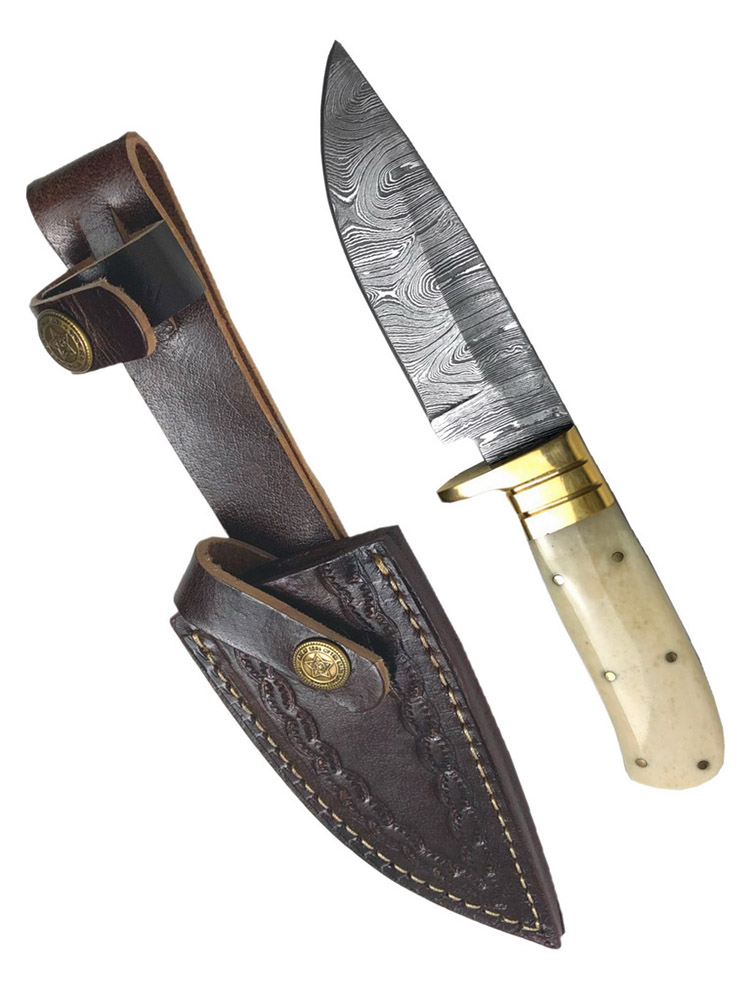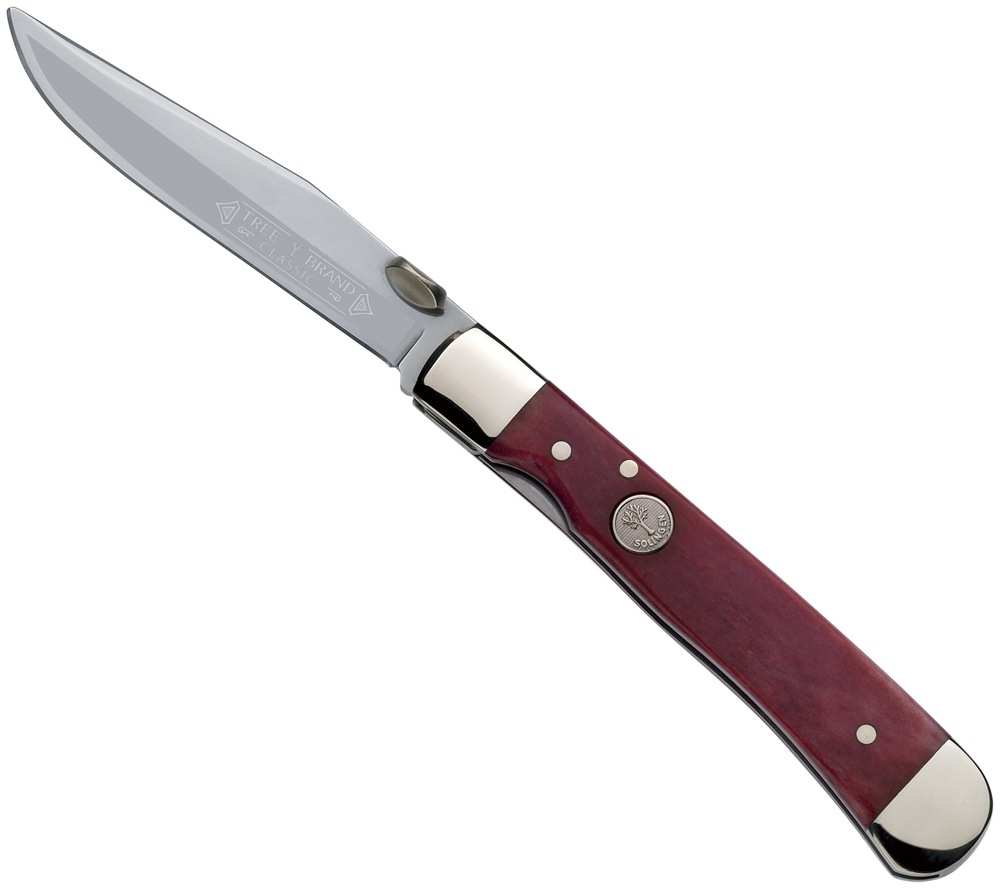More About Bone Handle Knives
Table of ContentsThe Of Bone Handle KnivesAn Unbiased View of Bone Handle KnivesGet This Report on Bone Handle KnivesThe 5-Second Trick For Bone Handle KnivesUnknown Facts About Bone Handle KnivesThe Ultimate Guide To Bone Handle Knives
Nothing looks as abundant as well as natural as cream color, brightened horn, covering, or coral. It is quite typical to see a fork of an antler used to sustain or raise a blade on a display screen stand, as well as though that is where most of us start in our pursuit to show a knife, a development of that process is inescapable in the finer works.Along with timber, horns and also antlers are most likely the oldest knife handle product. Horn and also antler can be left rough, polished, or sculpted, occasionally scrimshawed or textured - Bone Handle Knives.
Horns are generally much more dense than antlers. Antlers are a porous bony appendage that are dropped yearly, so horns are a sustainable resource.
The Only Guide to Bone Handle Knives
Some horns are far better than others. Typically, the terms horn and antler as well as stag are interchanged, which can cause some confusion. Every one deserves some unique attention: (also called stag horn, deer horn): In America, this comes from the annual sheds of both the Mule Deer and the Whitetail Deer.
They are most likely the least costly of deal with materials on this web page. Accessibility is great, use features are inadequate to fair. Appearance is fair, contaminate discoloration is regular. The very best use of deer antler is by cautious selection of thick, hefty parts that are on the surface area of the antler.
See maintained horn below. Polishes well. (additionally called Elk horn) Comes from the yearly sheds of the American Elk, a big deer varieties in America. Elk antlers are certainly an action up from deer horns, as they are thicker, stronger, with a smaller main portion of permeable material, as well as a thicker outer thickness.
Bone Handle Knives - Questions
Look is fair, contaminate discoloration is regular. Just like deer horn, the very best use is by cautious choice of thick, heavy portions that are on the surface of the horn. The only permanent approach of building and usage for a fine customized knife is to have the antler expertly stabilized.
Polishes well. (additionally called Stag, India Stag, Stag, Axis Stag, Red Stag, Cut Stag, Twelve O'clock At Night Stag): Comes from the Sambar deer or Cheetal deer of India and also the Pacific rim countries. There was a stoppage on Indian Sambar that was lifted once after that reapplied, however the horn is available with various other countries, and also materials can be found throughout the web, so don't assume it is in any method rare.
 Unlike deer and elk horn, it is hard, hard, solid and dense. As opposed to a huge porous main core, it has a small core, and a very strong outer shell, expanding through most of the antler. It can have a gorgeous brown textured surface area, making it really attractive for knife takes care of, and a about his safe and secure, comfortable gripping surface area.
Unlike deer and elk horn, it is hard, hard, solid and dense. As opposed to a huge porous main core, it has a small core, and a very strong outer shell, expanding through most of the antler. It can have a gorgeous brown textured surface area, making it really attractive for knife takes care of, and a about his safe and secure, comfortable gripping surface area.The 15-Second Trick For Bone Handle Knives
 Crowns are the thick, wide flaring components of the antler where it affixes to the pet's head. The crowns are usually used on surprise tang knives, where the tang is put into a hole pierced in the core of the antler as well as secured with pins, epoxy, or hidden techniques. This develops a manage that shows up as a strong piece of horn flaring out to the crown at the butt.
Crowns are the thick, wide flaring components of the antler where it affixes to the pet's head. The crowns are usually used on surprise tang knives, where the tang is put into a hole pierced in the core of the antler as well as secured with pins, epoxy, or hidden techniques. This develops a manage that shows up as a strong piece of horn flaring out to the crown at the butt.Horn crowns are also sculpted right into belt clasps, conchos, or various other precious jewelry or accessory and fittings. One of the most long-term method of construction as well as use for a great custom-made blade is to have the antler properly supported, unless it's Sambar Stag which is rather hard and recommended you read resilient. See supported horn listed below.
Very same stability as antlers above.: There are methods to deal with the horn prior to as well as after it is placed on a blade that change the wear characteristics, the appearance, as well as the longevity. One way is flame therapy, which melts the surface area to a darker shade, and also sets it rather. Stag can additionally be tinted by discolorations or potassium permanganate bathrooms.
The Bone Handle Knives Ideas
Most likely the ultimate is stress stabilization, done by several firms across this nation, where liquid phenolics are forced under excellent stress into the porosity of the product to fill any kind of spaces and also essentially water-proof the product. The same process is made use of on woods (see my wood knife take care of web page below).
Kudu horn is similar in form and also finish, both might be pressure supported and sealed.: These are comparable. They differ in shape, they have heavy ridges or appearance along their length so that may in hold safety when installed on a blade handle. Their stability is the exact same as any type of horn, as well as they are commonly readily available.
A lot of the horns and horns noted on this page can be stabilized, that is fertilized with dyes and resinous or phenolic fluid plastics (polymers or phenolics) at high stress, basically my blog making a block of plasticized horn product. Bone Handle Knives. This is done some, I think it holds a huge opportunity to maintaining firms in the future.
The 6-Minute Rule for Bone Handle Knives
Cream colors are animal teeth. Cream colors and also tusks are abnormally thick, some of the densest, hardest animal components as well as stays.